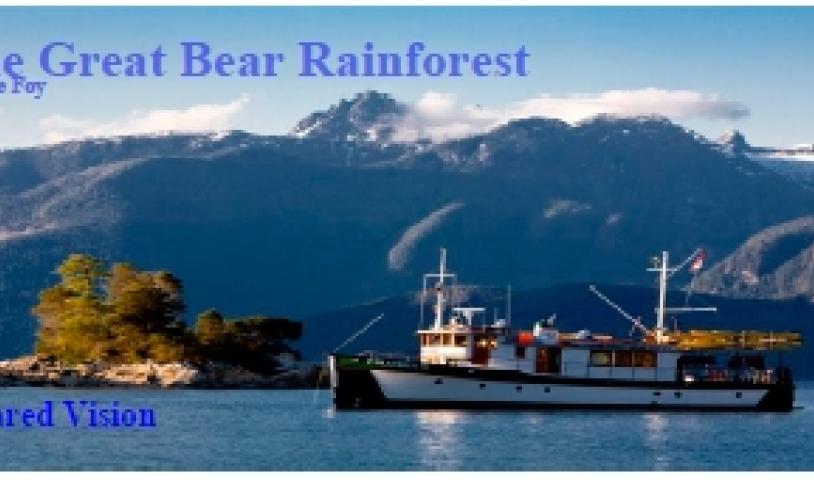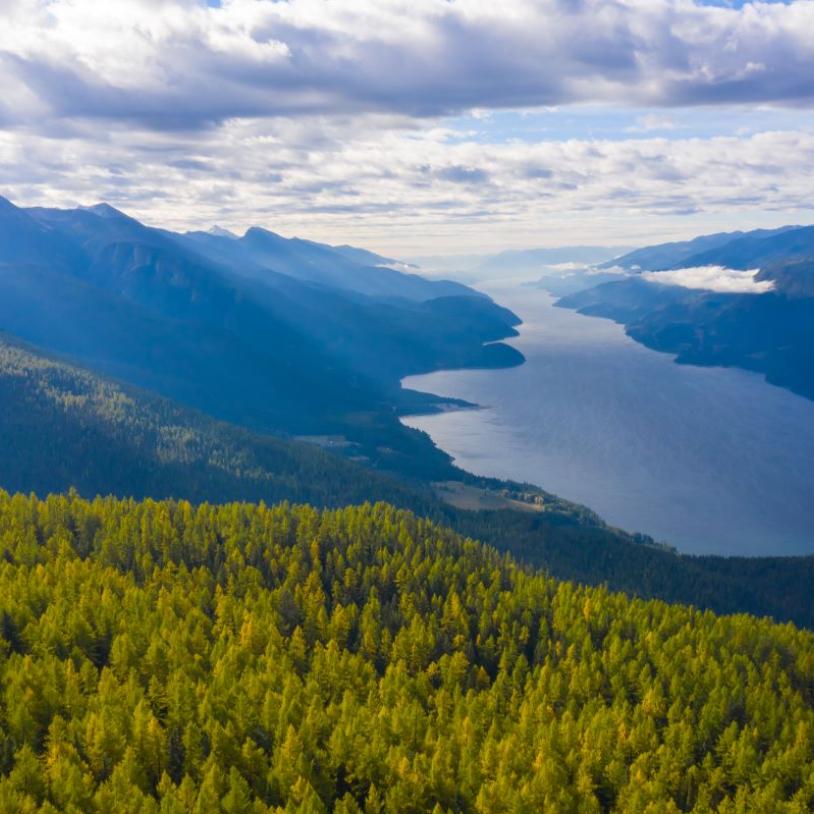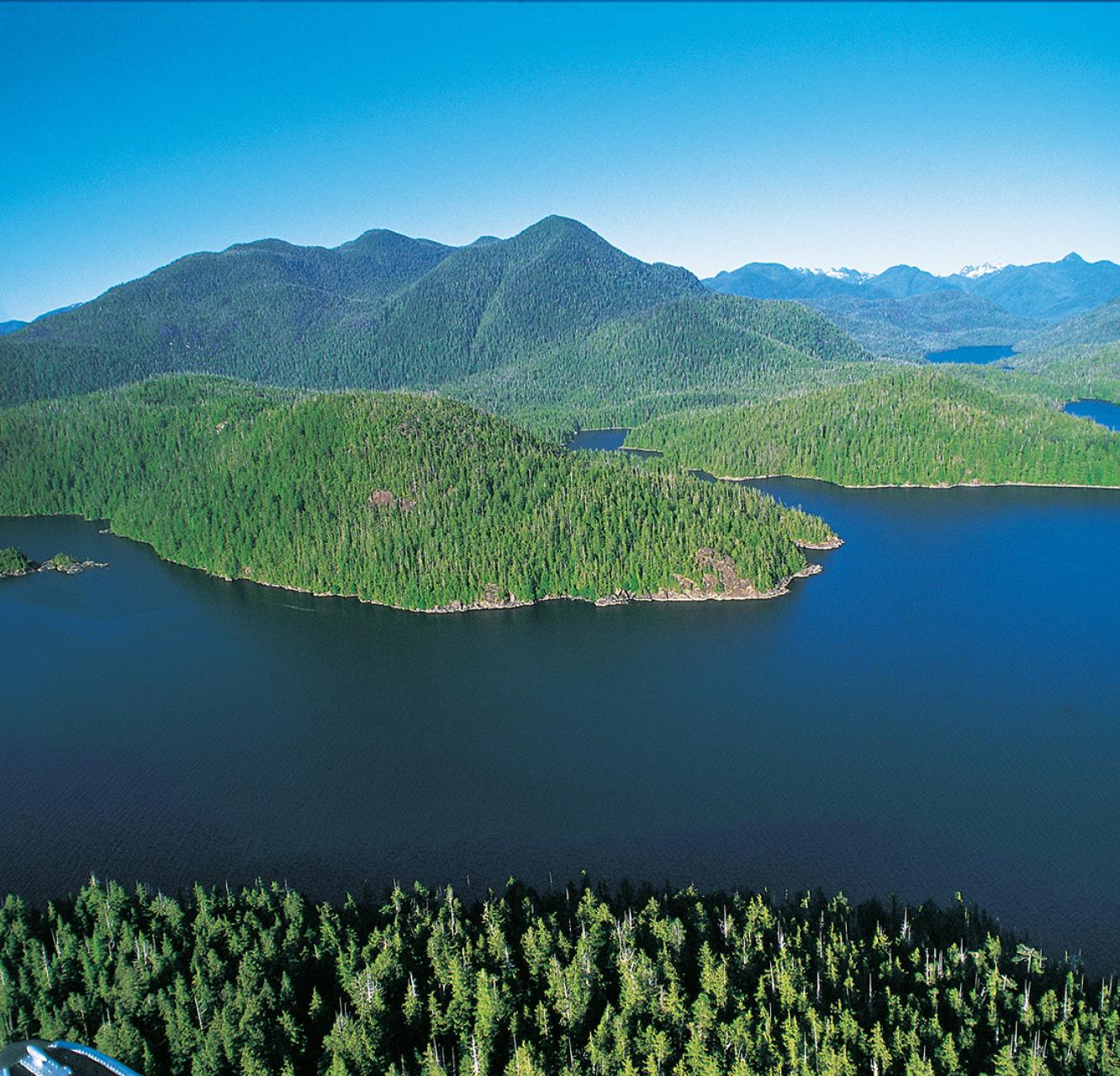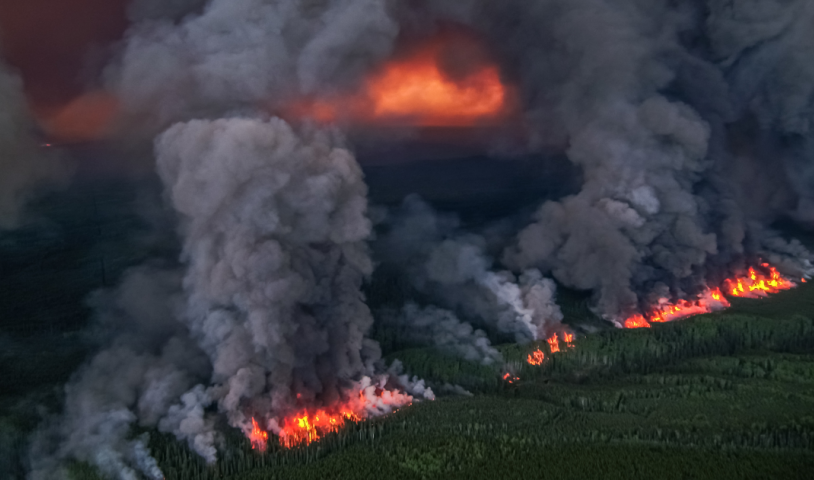The Great Bear Rainforest ‑ Shared Vision
Wednesday, October 14, 1998
October 15th, 1998
By Joe Foy
It was 6:00am on a sunny June morning earlier this year and I was slowly waking up in a bedroom that was not my own. My queasy stomach was telling me something was wrong.
Looking up at a round window shimmering with sunlight and seafoam my memory began to seep back. I was on a 60 foot motor vessel in the wide open Pacific, north of Port Hardy bound for the Great Bear Rainforest with a half-dozen conservationists at the start of an eight day voyage. My bedroom was rolling and pitching like a barrel running Hell's Gate and I was seasick.
I made a desperate dash for the stairs. All I could think of was getting on deck for a cool breath of fresh air. One by one my fellow travellers lurched on deck with the same green completion and desperate look in their eyes. Even the captain did a turn at the rail as the boat heaved and shuddered through the great rolling waves.
Around noon we entered sheltered waters off Calvert Island and nosed into the labyrinth of quiet inlets and passages that access the jade-green heart of the Great Bear Rainforest. Everyone's spirits lifted and stomachs calmed down. We had arrived in Heaven - and it was worth every minute of Hell to get there.
Conservationists chose the name "Great Bear Rainforest" several years ago to describe the 100 still wild valleys on B.C.'s north coast. The Great Bear Rainforest is actually three separate coastal wildland areas totalling 3.5 million hectares. All of the Great Bear Rainforest is First Nations territory. The signs of their continuous use and occupation is everywhere, from the modern day villages of Bella Bella and Klemtu to the ancient river-mouth fish traps and scarred cedar trees where bark was harvested many years ago to produce ropes, nets and clothing. The great beauty and richness of the Great Bear Rainforest is a living testimonial to past generations' wise use and care of the land.
Further up the coast in Alaska three huge coastal wilderness areas have been set aside by the Americans. Glacier Bay National Park, Admiralty Island National Monument and Misty Fiords National Monument preserve about 3 million hectares of spectacular wildcountry and help support a growing tourism industry and a healthy fishery. However, on B.C.'s coast timber companies like International Forest Products (Interfor) and Western Forest Products (WFP) are working hard to convince First Nations communities that clearcutting the Great Bear Rainforest is the way to prosperity. We were here to see for ourselves.
Our first stop was the mouth of the Koeye River, where we met up with a little white sail boat anchored a short way upriver. On board were Ian and Karen McAllister who were to be our guides for the rest of the voyage. Ian and Karen have produced the beautiful hard-cover book entitled The Great Bear Rainforest - Canada's Forgotten Coast, based on their many trips into the area from the early 1990's until today. It's beautiful pictures and eloquent writing have made it a Canadian best seller and a thorn in the side of those timber companies bent on clearcutting the rainforest.
Here in the Koeye estuary we saw why the area had been christened the Great Bear Rainforest. The sedge meadows had freshly tilled areas where grizzlies had ripped open the soil digging for the tasty bulbs of rice root plants. And in the forests, along a well travelled bear trail, grizzlies had scarred trees with tooth and claw to mark their territories.
The next day our boat left the Koeye and wound its way through a maze of islands and passages to the mouth of Johnston Creek, the largest coho salmon stream in Rivers Inlet.
Near by we saw how road building by Interfor had caused a mudslide near the height-of-land separating the Johnston from a neighbouring small watershed. Luckily, the Forest Action Network (FAN), a grassroots conservation group had put pictures of the mudslide on the internet and Interfor had quickly stopped roadbuilding, afraid of world-wide public attention. Hiking deep into the pristine Johnston we saw extensive grizzly trails and marking trees. Under a huge sitka spruce tree we saw a grizzly "belly hole" - a pit dug out of the riverside sand for a salmon-gorged grizzly to rest her stomach in. On a hillside we found a cedar tree that had been stripped of its bark on one side - evidence of use by First Nations people long ago. We left the Johnston determined to keep Interfor and their clearcuts out of the valley.
Near the tiny floating community of Dawson's Landing we slowly cruised by a recent clearcut.. Interfor fallers had levelled this forest right down to the water in 1997. Over towards Bella Bella, Ian told us, WFP was busy blasting logging roads into the Ingram valley.
We cruised to the Allard Valley and hiked up to Allard Lake. At he end of the trail by the lake amongst the salal were piles of fur and bones - the remnants of a wolfkilled deer that had been divided up between members of the pack.
Never in my life have I experienced such a large wild area so rich in wildlife. The B.C. government has convened a Land Use Study Team to put together a plan for the Great Bear Rainforest, setting out which lands should be logged and which should be preserved. The team has been meeting for well over a year and has been unable or unwilling to stop important areas like the Ingram valley from being roaded while the team meets. Sadly, the team is dominated by the timber industry and constrained by the B.C. government's upper limit on wilderness preservation to only 12% of the landbase.
Flying back to the Vancouver Airport I looked down on the heavily clearcut east coast of northern Vancouver Island. I could see the eroding salmon streams and the hillsides bleeding with mudslides. "It's been massacred, and now the timber companies are coming north for the Great Bear Rainforest to do the same thing there," I thought to myself. I thought of the bears, salmon, eagles, seals and whales I'd seen.
The Western Canada Wilderness Committee has just produced an information newspaper about the Great Bear Rainforest and what you can do to help preserve it - all 3.5 million hectares. For your free copy please phone us at 683-8220.





